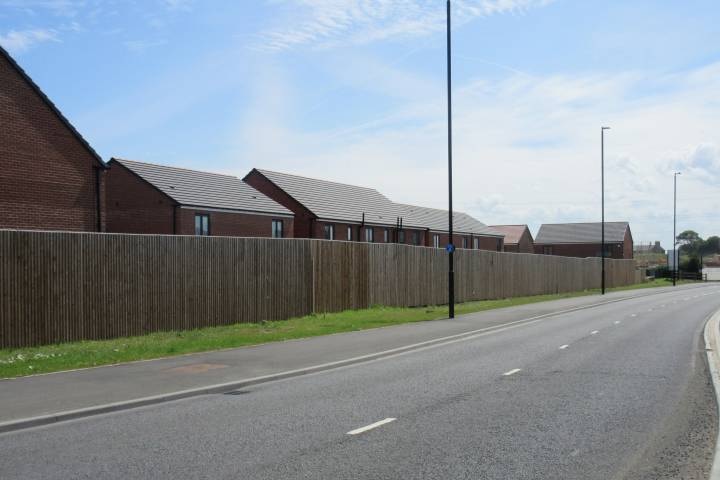
Cyclists and pedestrians are being frequently overlooked when it comes to the design of new housing developments in England, a new report has found.
The University College London report, which reviews over 140 housing developments built across England since 2007, says developers are focusing ‘too much on roads’.
When looking at active travel, the review assessed whether the streets:
- Are pedestrian and cycle friendly and designed to encourage cars to drive slowly (max 20mph) and carefully
- Are designed in a way that they can be used as social spaces, such as spaces for children to play safely or for neighbours to converse
It found that 30% of the developments had either poor (26%) or very poor (4%) facilities for pedestrians and cyclists – with 37% ranked as mediocre.
Just 32% ranked as either good (29%) or very good (3%).
The UCL report notes: “The potential for active travel, whether by foot or on a bicycle, has been a key determinant of healthy lifestyles in numerous studies.
“Turning streets from vehicle dominant to pedestrian and cycle friendly spaces involves slowing vehicle speeds (through design), designing parking to avoid conflicts, introducing cycle infrastructure and high quality pavements, and providing attractive street spaces with sufficient street furniture for rest and relaxation.”
Scotland: new housing ‘forcing car dependency’
The UCL report backs up the findings of a separate audit carried out by Living Streets Scotland.
The audit assessed three housing developments, all of which were approved following the introduction of the Scottish Government’s designing streets guidance. Published in 2010, the guidance says new housing developments should ‘increase the attractiveness of walking, cycling and the use of public transport’.
However, the Living Streets Scotland investigation concluded that none of the developments it looked at were easy to live in without at least one household car, while pedestrian design, public transport and local facilities were lacking.
As a result, Living Streets Scotland called on the Scottish Government to do more to meet the aspirations of new homeowners who want to walk more and drive less.
Cycle paths alone don’t make new developments cycle friendly.
Most new developments and older terraces, provide cycle parking only at the back of houses, in the garden, leaving residents to drag often wet or muddy bikes through carpeted halls and living rooms to reach the shed, or if provided, brave narrow unlit, dog faeces strewn paths between houses, not very desirable and both options are impossible with cargo bikes or any other non standard cycle.
Until cycle parking is easy and provided at the front of the house in secure structures such as Bike Hangers, cycling will continue to be only for the most determined and the hardest option practically.
Matthew McDonald, Exeter
0
The conclusions of this study seem reasonable in that much more could be done to design layouts to be better for peds and cyclists. However, the report suggests councils need to take a much tougher line by refusing applications where the layout doesn’t meet the report authors’ aspirations. It is always going to be a serious challenge for local highway authorities to take such a tough line when NPPF para 109 is routinely used against us. It is very difficult to support the assertion that a proposed layout will have an “unacceptable impact on highway safety” and even harder to defend it at appeal without a strong lead from government recognising and supporting the principle.
That said, we could achieve a lot by persuasion and by cooperation between local authorities and developers
David Abbott, Leicester
0
I presume these developments have footways and carriageways (as in the photo) which are designed for pedestrians and cyclist respectively. If so, what did the 30% of developments which had ‘poor’ or ‘very poor’ facilities lack? Also, a lack of places for children to ‘play’ on the highway is not a necessarily a bad thing.
Hugh Jones, Cheshire
--4